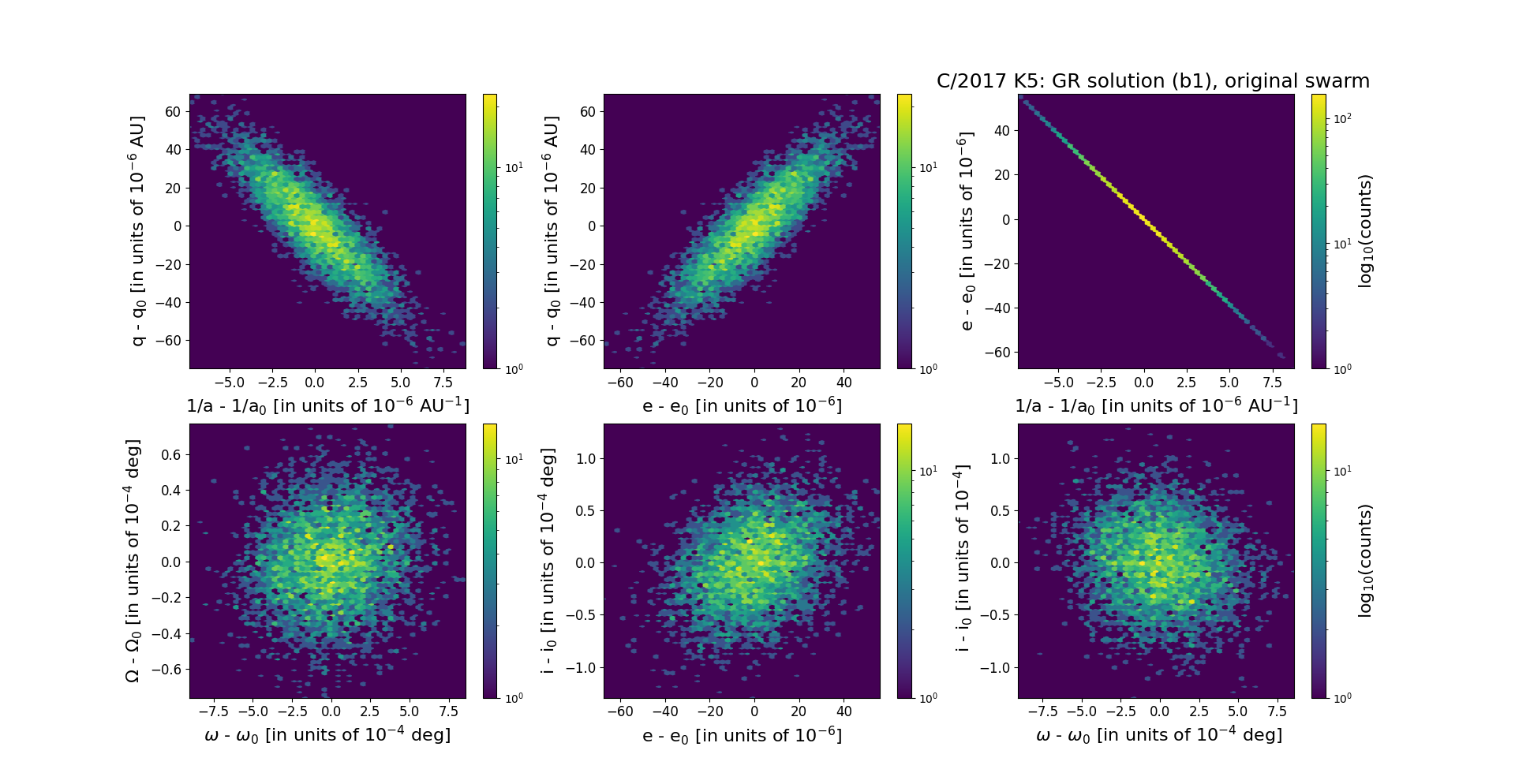C/2017 K5 PANSTARRS
more info
Comet C/2017 K5 was discovered on 27 May 2017 with Pan-STARRS 1 telescope (Haleakala), that is almost 3 years before its perihelion passage. This comet was observed until 9 July 2020.
Comet will have its closest approach to the Earth on 2 July 2020 (6.688 au), a bit more than a 3 months after its perihelion passage.
The preferred solution given here is based on pre-perihelion data spanning over 3.12 yr in a range of heliocentric distances from 9.90 au – 7.68 au (perihelion) – 7.71 au.
This Oort spike comet suffers small planetary perturbations during its passage through the planetary system that likely lead to escape the comet from the planetary zone on a hyperbolic orbit (see future barycentric orbits).
Comet will have its closest approach to the Earth on 2 July 2020 (6.688 au), a bit more than a 3 months after its perihelion passage.
The preferred solution given here is based on pre-perihelion data spanning over 3.12 yr in a range of heliocentric distances from 9.90 au – 7.68 au (perihelion) – 7.71 au.
This Oort spike comet suffers small planetary perturbations during its passage through the planetary system that likely lead to escape the comet from the planetary zone on a hyperbolic orbit (see future barycentric orbits).
| solution description | ||
|---|---|---|
| number of observations | 118 | |
| data interval | 2017 05 27 – 2020 07 09 | |
| data type | almost all measurements before perihelion (PRE++) | |
| data arc selection | entire data set (STD) | |
| range of heliocentric distances | 9.9 au – 7.68 au (perihelion) – 7.71 au | |
| detectability of NG effects in the comet's motion | NG effects not determinable | |
| type of model of motion | GR - gravitational orbit | |
| data weighting | YES | |
| number of residuals | 229 | |
| RMS [arcseconds] | 0.49 | |
| orbit quality class | 1a | |
| orbital elements (barycentric ecliptic J2000) | ||
|---|---|---|
| Epoch | 1710 02 26 | |
| perihelion date | 2020 03 24.72002396 | ± 0.00381477 |
| perihelion distance [au] | 7.66911839 | ± 0.00002150 |
| eccentricity | 0.99976019 | ± 0.00001773 |
| argument of perihelion [°] | 171.872980 | ± 0.000256 |
| ascending node [°] | 102.361848 | ± 0.000023 |
| inclination [°] | 82.297153 | ± 0.000037 |
| reciprocal semi-major axis [10-6 au-1] | 31.27 | ± 2.31 |
| file containing 5001 VCs swarm |
|---|
| 2017k5b1.bmi |

Upper panel: Time distribution of positional observations with corresponding heliocentric (red curve) and geocentric (green curve) distance at which they were taken. The horizontal dotted line shows the perihelion distance for a given comet whereas vertical dotted line — the moment of perihelion passage.
Middle panel(s): O-C diagram for a given solution (sometimes in comparison to another solution available in CODE), where residuals in right ascension are shown using magenta dots and in declination by blue open circles.
Lowest panel: Relative weights for a given data set(s).
Middle panel(s): O-C diagram for a given solution (sometimes in comparison to another solution available in CODE), where residuals in right ascension are shown using magenta dots and in declination by blue open circles.
Lowest panel: Relative weights for a given data set(s).
